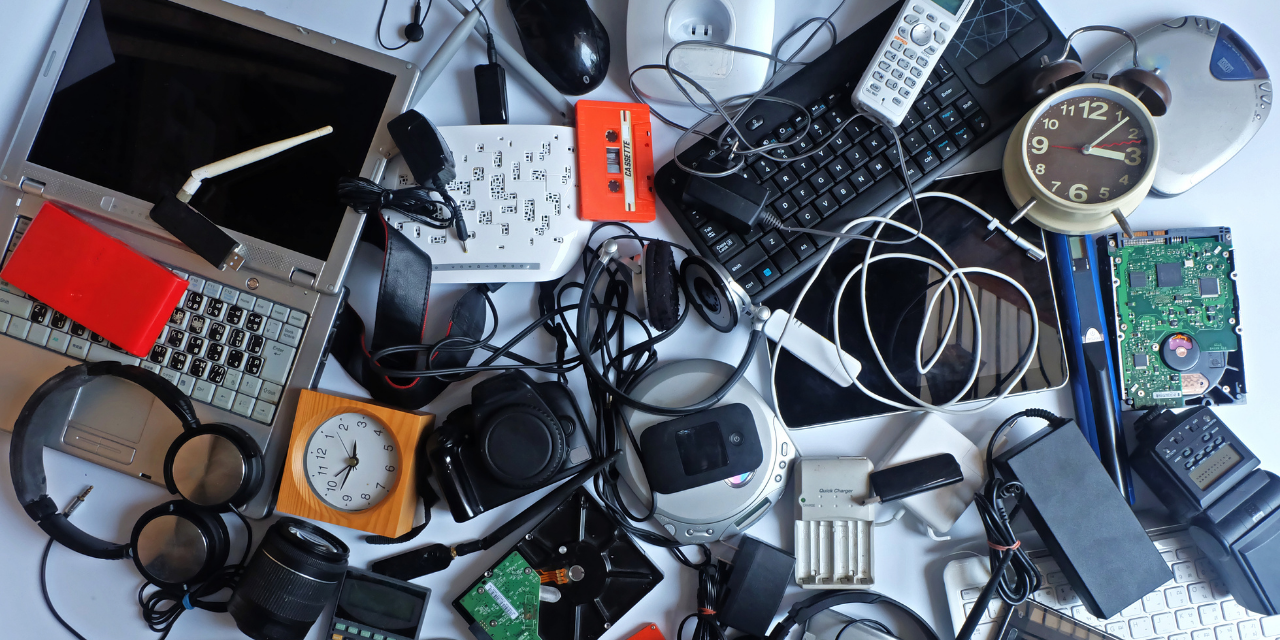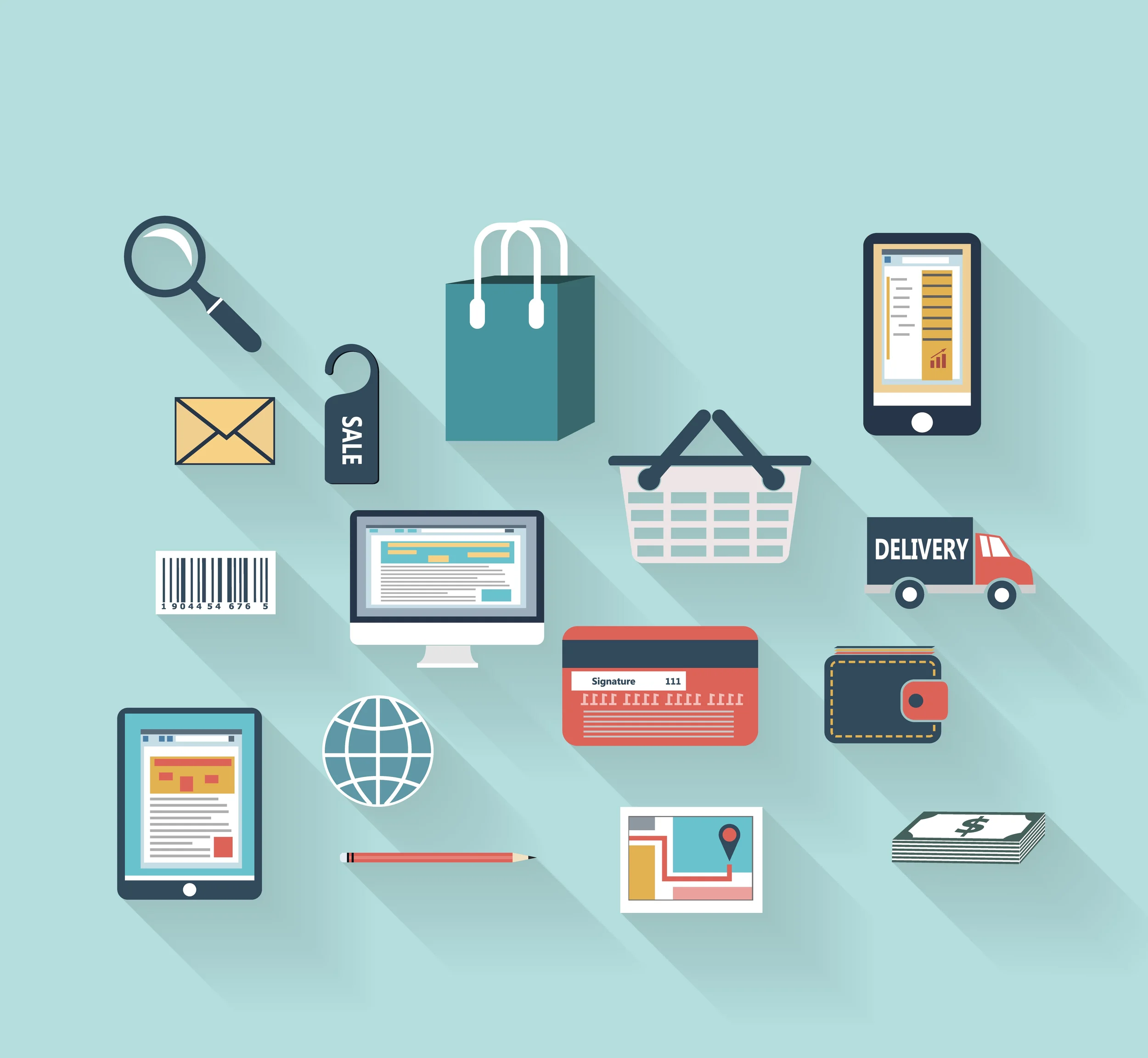How many electronic devices do you own? How many have you owned in your life? Where do your devices go when you no longer need them? Are you disposing of them correctly? These are questions you likely haven’t considered before, but they are important when we consider the amount of waste we produce. We know how household rubbish processing and recycling works, so why not how to deal with electronic waste?
Unfortunately, huge amounts of electronic goods end up going to landfill. This specific type of wate is called “e-waste” and is increasingly becoming a concern for governments globally. The world produces around 50 million tons of electronic waste per year, a weight heavier than every commercial aircraft ever built combined. The World Economic Forum predict that this will have more than doubled to 120 million tons annually by 2050.
We live in a throwaway culture, not just when it comes to electronic devices but with many aspects of our lives, and it’s unsustainable. Constant technological innovation means that new iterations of similar electronic products are constantly created, manufactured, marketed, and sold. Just think about how many new phones, TVs, laptops, headphones and smart watches you have purchased to keep up with the latest tech trends.
We are stuck in an upgrade cycle and simply not enough is being done to keep that cycle closed. Instead, the supply chain is linear, resulting in waste production en masse. What many companies are working towards to combat this is a closed circular economy, whereby resources are kept in a closed ecosystem through repurposing and recycling, rather than a linear economy where all output ends up in landfill.
We should all be proponents of a circular economy and consider how we can apply it in our everyday lives, starting with our devices. For example, 77 percent Apple’s carbon footprint comes from the manufacturing stage alone. So, regardless of where your iPhone, Apple Watch or Macbook ends up, in landfill or in a drawer at home, its damaging contribution to rising greenhouse gasses is already done. This puts pressure on us as consumers to extend the life of our devices as much as possible, whether that manifests as reselling, refurbishing, or recycling.
Research from our own client HYLA Mobile shows that on average consumers in the US hold onto their mobile devices for just over three years. HYLA repurposes mobile devices to be re-sold in the secondary device market, some being sold right back to US consumers and others heading internationally, perhaps to markets where purchasing a new flagship smartphone is an impossibility. Trading-in old mobile devices extends their lifespan beyond three years and might save it from creating e-waste.
One stat from a BBC article looking at electronics manufacturing describes how over the last 50 years, we have been rapidly depleting our planet’s finite resources through raw material mining, over-consumption, and throwing our goods into landfill. It said that if all 7.8 billion people on Earth consumed the same level of materials as us Europeans, we would require 2.8 planet Earths just to maintain the supply of finite resources like precious metals that we mine today.
According to UN Environment, the extraction industries are responsible half of the world’s carbon emissions and about 80% of biodiversity loss. Over the last 50 years, material extraction has tripled and many resources are now becoming harder to find, more expensive, and the environmental costs of extraction ever greater. For example, the smartphone industry consumes 335 tons of gold annually and the impact of this goldmining is vicious.
Many device manufacturers are taking steps to improve, including supply chain refinement and making suppliers adhere to “conflict minerals policies” and be subject to third party audits. One key issue is the host of toxic chemicals released into the natural environment through mining processes, destabilising precious ecosystems and often leaking into local waterways. It may seem farfetched, but our purchasing habits are harming local communities on the other side of the planet, to which the concept of being stuck in an upgrade cycle for the latest iPhone is completely alien.
We aren’t fighting a losing battle. Between April 2017 and March 2019, the metal from over six million mobile phones and almost 72,000 tonnes of e-waste was extracted from devices donated by people all over Japan to make around 5,000 gold, silver and bronze Olympic medals. Both smart and creative, this initiative should set the standard for governments tackling e-waste globally.
So, what can be done? Firstly, as consumers we should be conscious of how we dispose of our electronics. Just remember the old mantra, reduce reuse recycle. Recycling is the best way to ensure the lives of our devices are extended to their full potential.
Secondly, enterprises globally purchase large volumes of devices which are often replaced quickly, as there is a monetary incentive to keep devices up to date. Research from our own client Blancco found that some organisations are wasting up to $100,000 a year hoarding useless IT equipment. To tackle e-waste, businesses today must implement corporate social responsibility policies which include the responsible disposal and recycling of IT equipment.
Collectively we need to better understand where our devices come from, where they go, and where they should be going to best help our planet. Next time you purchase a new device, give some thought to what you are replacing, and whether that device can have a second, third or fourth life.















